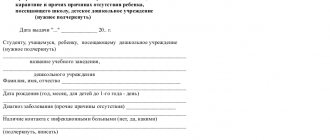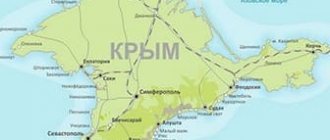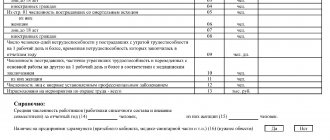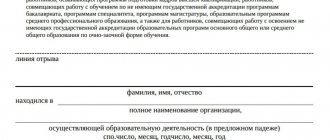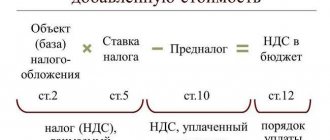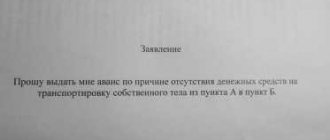What is a tariff discount?
Insurance premiums “for injuries” are transferred by organizations and individual entrepreneurs that have employees. Contributions “for injuries” are calculated based on the insurance tariff, taking into account a discount or surcharge (Clause 1, Article 22 of the Federal Law of July 24, 1998 No. 125-FZ “On compulsory social insurance against industrial accidents and occupational diseases”). The rate of contributions for insurance against accidents and occupational diseases, as a general rule, depends on the main type of activity of organizations or individual entrepreneurs. At the same time, the Social Insurance Fund has the right to set a tariff for 2020 taking into account a discount or surcharge. To do this, the labor safety indicators in the organization are compared with industry average values:
- for 2020 - (resolution of the Federal Social Insurance Fund of Russia dated May 26, 2020 No. 72);
- for 2020 – (Resolution of the Federal Social Insurance Fund of Russia dated May 31, 2020 No. 61).
Officials from the Social Insurance Fund, when deciding on the establishment of a discount on the tariff, compare, in particular, the following values (clause 3 of the Rules, approved by Decree of the Government of the Russian Federation of May 30, 2012 No. 524):
- the ratio of the expenses of the Federal Social Insurance Fund of Russia for the payment of all types of provisions for all insured events with the employer and the total amount of accrued contributions for “injuries”;
- number of insurance cases per 1000 employees;
- number of days of temporary disability per insured event.
Now organizations and individual entrepreneurs can receive a discount on contributions “for injuries” for 2020. To do this, they need to submit a corresponding application to the Social Insurance Fund before November 1, 2020 inclusive. If the applications are considered and approved, then in 2020 you will need to pay less contributions “for injuries”. It is worth noting that the application can be submitted directly on November 1, 2020 and this will not be a violation of the deadline.
Certificate confirming the type of economic activity for the Social Insurance Fund
the amount of income is set according to the Financial Results Report for the previous year. Account turnover 90.01 minus account turnover 90.03. (Revenue minus VAT). If there are several types of activities, then show revenue by type of activity. And this is the analytics for the account. 90.01.1 according to
Depending on the business activity that the employer conducts, the risks associated with this business for employees vary. It’s one thing to sort through papers in an office, but completely different to participate in underground work. To distinguish between the various types of activities, officials have developed a special document.
This is the Classification approved by Order of the Ministry of Labor dated December 30, 2016 No. 851n. It groups all types of entrepreneurial activities into 32 occupational risk classes. The higher the risk of injury, the higher the contribution rate is set for the employer.
https://www.youtube.com/watch{q}v=https:accounts.google.comServiceLogin
The legislation delegates to the FSS the authority not only to determine the tariff for the policyholder, but also allows it to be changed by applying a discount or surcharge. The most that the Fund can discount or add is 40% of the established tariff based on the results of the company’s activities for the previous 3 years.
Who can get a discount
Any organization or individual entrepreneur (policyholders) may receive a discount for 2020, subject to the following conditions.
- the policyholder (organization or individual entrepreneur) is registered and has actually been in force for three years or more;
- the policyholder pays current insurance premiums on time;
- on the date of filing the application there are no debts on contributions “for injuries”;
- does not have insured fatalities.
It is useless to apply for a discount if in the previous year you had fatal accidents that were not the fault of third parties
At the same time, we believe it is advisable to pay attention: an organization or individual entrepreneur is not required to apply to the Social Insurance Fund for a discount before November 1, 2020, if they do not want to receive it in 2017. Accordingly, there is no liability for failure to submit an application before November 1, 2020. But if you submit an application after November 1, then the discount for 2020 will not be established
Types of airfare
Airfare is a fee charged by airlines for a certain range of air transportation services. The air ticket fare calculation includes: flight distance - domestic/international flight, air ticket class - economy, business or first class, luggage availability. More information about the classification of air tickets can be found here.
In the formation of international tariff policy and accreditation of travel companies, the leading place is occupied by IATA - the International Air Transport Association. Without its approval, airlines do not have the right to carry out regular flights.
The general classification of tariffs is as follows:
- IATA published (basic) tariffs are set only by the Association. Tickets of this tariff category can be purchased through any reservation system; information about them is contained in all tariff directories.
- Published airline fares are fares set individually for each accredited air carrier. The price of the fare offered by the airline is changed only in agreement with IATA.
- Confidential airline rates that are a trade secret to other companies. The number of offers at confidential rates directly depends on demand and competition. This group is considered the most profitable when purchasing a ticket with a simple route.
Unlike the latter, the first two categories are characterized by: high price, complexity and distance of the route, especially in cases where more than one carrier is used. In more detail, tariffs are divided into basic (full), special or preferential (spousal, group, family, youth).
Discount application: form and sample
An application for a discount on the Social Insurance Fund tariff for 2020 must be submitted to the Social Insurance Fund branch at the place of registration of the organization (IP). The application must be submitted no later than November 1, 2020 (this is Tuesday). The form of this application is determined by law (Appendix 5 to Order of the Ministry of Labor of Russia dated September 6, 2012 No. 177n). Applications cannot be submitted in any form. Here is the application form that you can download.
A completed sample application for a discount, which you can also download, may look like this:
The discount amount is calculated based on the results of the organization’s work over three years. At the same time, discounts in the tariff for contributions “for injuries” for 2017 are established taking into account information about a special assessment of working conditions, based on the results of certification of workplaces. The results of mandatory medical examinations of employees as of January 1, 2020 will also be taken into account. Previously, this information had to be submitted along with the application when applying for a discount. However, now this information is contained in Table 10 of Section II of Form 4-FSS. In this regard, there is no need to additionally attach this information to the application for establishing a discount.
What are the special rates?
All categories not related to the basic tariff are special, preferential, and belong to the “business” and “economy” classes. The general rule applies to them: the lower the price, the less likely it is to change the departure date or return the ticket.
Existing restrictions do not create any inconvenience for travel planning, nor do they reduce the level of quality of service. These are the same air tickets, but with certain and pre-agreed conditions. Each direction has several types of special fares, but the number of tickets is always different and limited. Let's look at the most famous types of airfare.
Youth
The tariff is valid for persons under 25 years of age (in some cases 26). The age limit for the tariff is set based on the conditions of the receiving party.
Married
According to the tariff, one of the spouses has the right to purchase a ticket at 50% cheaper than its cost. This offer is not valid for all countries. A ticket for a spouse fare has a limited validity period - no more than 1 month.
Family
One of the spouses and children flying with him get the right to buy a ticket 50% cheaper. But, like the spousal tariff, this tariff does not apply to all countries. The permissible age of the child is from 2 to 25 years.
Pension
Occurs only for some directions. Passengers aged 55-60 years are entitled to a discount of 25-30% of the ticket price. Aeroflot uses this tariff hit for 80% of its flights – international and to CIS countries.
Group or excursion (Excursion)
Used for popular tourist destinations as well as tourist groups. The required number of passengers for this tariff is 4-20 people.
PEX
The tariff fixes the date of departure and arrival. In this case, you need to book and buy a ticket on the same day. Dates can be adjusted, but only upon payment of a fine. The ticket is valid for no more than 3 months.
APEX
Booking and ticket purchase occur on the same day. You can adjust your departure date, but only after paying a fine.
SUPER SAVER or PROMO
The cheapest tariff of all existing ones. A ticket with a validity of up to 3 months, as well as restrictions on the length of stay in the country of destination. A ticket can be refunded, but only one day before departure.
All of the listed tariffs have a number of advantages and disadvantages, so each of them is selected individually based on the needs of the buyer. You can read more about who is entitled to discounted plane tickets and how to buy them here.
New application form
Changes have also been made to the application form itself. The main innovation is that a table has appeared in which you need to reflect information on accrued premiums and expenses incurred by the policyholder. In particular, the accrued amounts of contributions must be entered into the table (for previous reporting periods and for the last three months of the current reporting period); expenses for payment of insurance coverage (for previous reporting periods and for the last three months of the current reporting period); expenses not accepted for offset; amounts received from the Social Insurance Fund; amounts of overpaid (collected) insurance premiums.
In addition, the application now needs to indicate the method of obtaining a decision on establishing (or refusing to establish) a discount: at a personal reception; by mail; in the MFC; through a single portal of public services (provided that the application is also submitted through the portal). A field has also been added to the form to indicate the policyholder’s checkpoint.
Grounds for refusing to accept an application
Under the previous rules, the fund could refuse to accept an application for two reasons:
- the application was submitted later than November 1 of the current year;
- the enhanced qualified electronic signature is invalid.
By order commented on, the FSS approved additional grounds for refusing to accept an application:
- the application does not comply with the established form;
- the applicant did not present a passport or a document confirming the authority of the policyholder’s representative during the personal appointment;
- a copy of the applicant’s passport and a document confirming the authority of the policyholder’s representative are not attached to the application sent by mail;
- The application sent through the unified portal of public services does not include a copy of the document confirming the authority of the representative.
Submitting an application
The application can be submitted in any of the following ways:
- in person at a reception at the territorial office of the fund at the place of registration of the policyholder - on paper;
- by mail to the territorial body of the fund at the place of registration of the policyholder - on paper;
- through a single portal of public services - in electronic form (the application must be signed with an enhanced qualified electronic signature);
Receive an enhanced qualified electronic signature certificate in an hour
- — through a multifunctional center for the provision of public services.
ckidki_po_vznosam_na_travmatizm_s_2019_goda.jpg
Related publications
All companies and individual entrepreneurs with employees are required to pay social insurance contributions for them in connection with industrial accidents and occupational diseases (contributions for “injuries”), in accordance with the Law “On Compulsory Social Insurance...” No. 125-FZ of July 24. 1998. The contribution rate varies from 0.2% to 8.5%, depending on the danger of the type of activity according to OKVED, which is the main one for the company. But employers can save on paying contributions if they apply for a discount to their FSS branch. In what cases can an employer count on a discount and what is necessary for this, we will tell you further.


